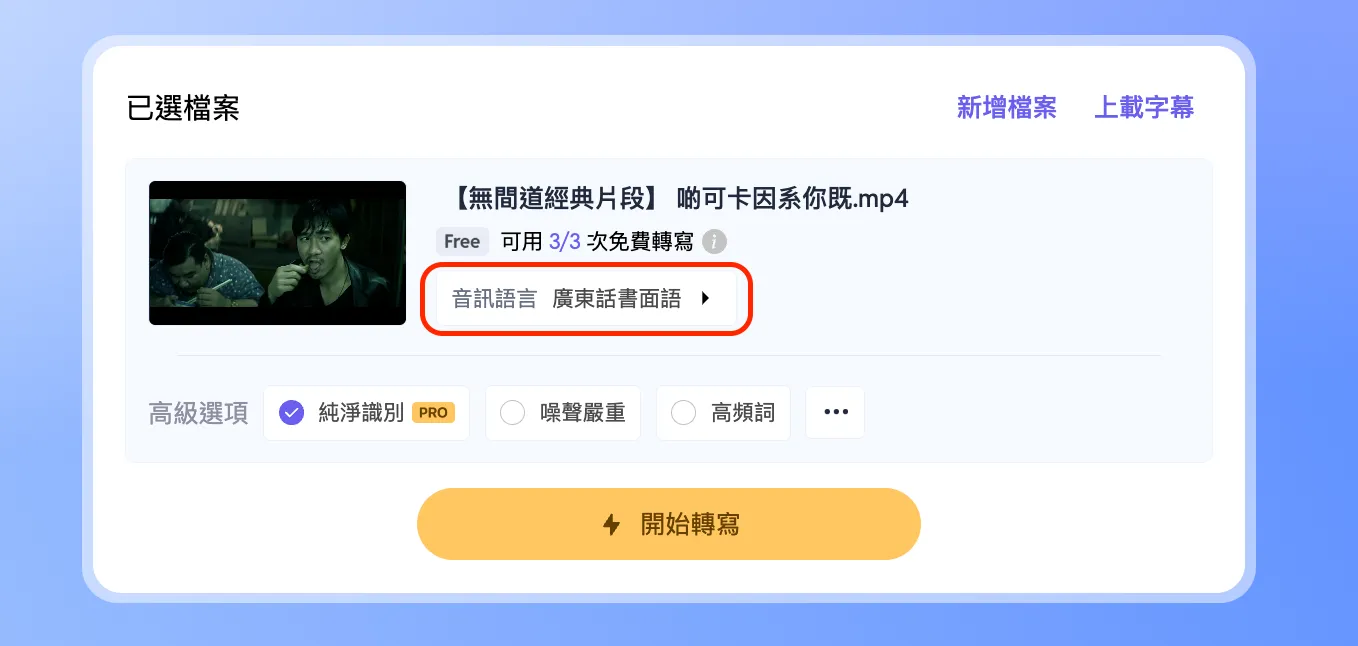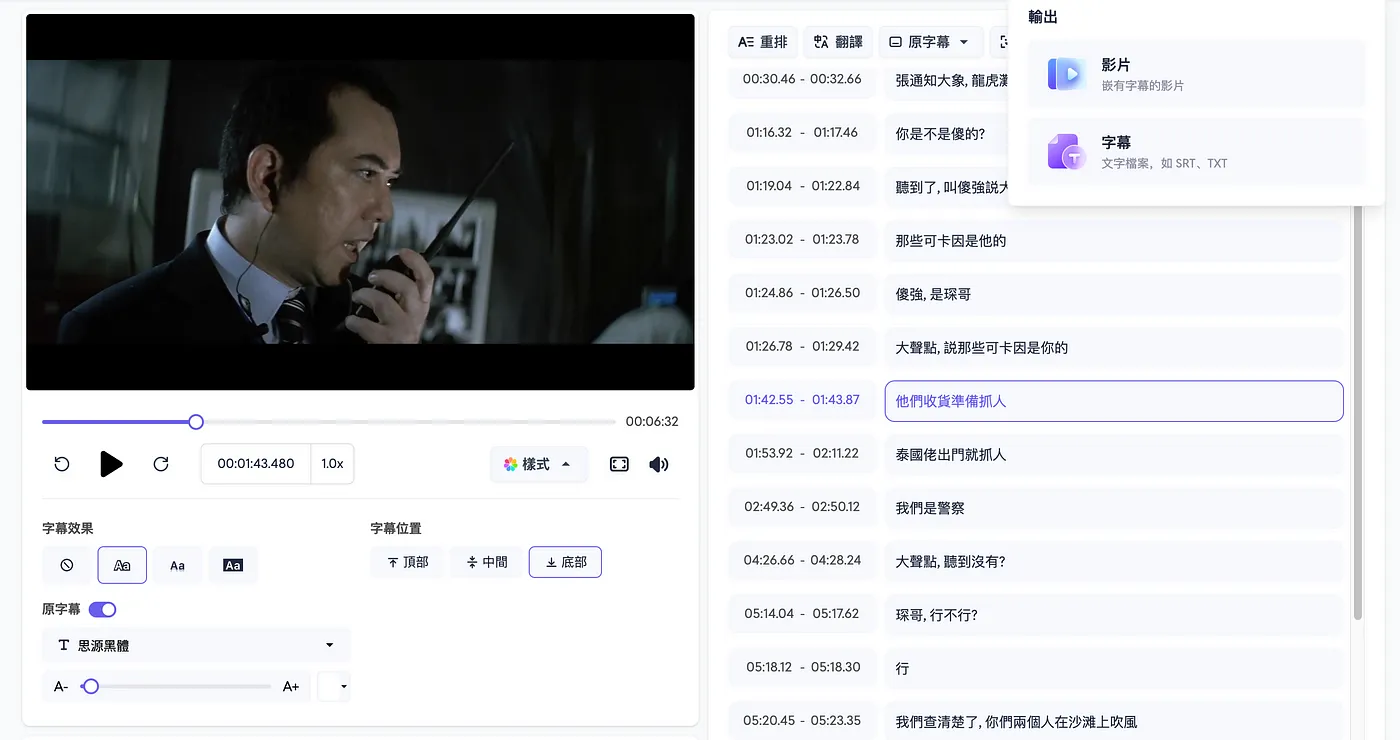
Differences Between Cantonese Spoken and Written Language & Conversion Tips
Cantonese is the most widely used language in Hong Kong, with over 85% of Hong Kong people using it for daily communication. However, there are significant differences between Cantonese spoken and written forms. Spoken Cantonese is more casual and often uses particles like “啦” and “嘅”, while written Chinese is more formal and follows stricter grammatical rules. These differences make spoken-to-written conversion an essential skill. Mastering this ability not only improves your writing skills but also makes your communication clearer and more professional.
Key Points
- Understanding the main differences between Cantonese spoken and written forms helps you convert more effectively, improving accuracy and professionalism.
- Master vocabulary replacement techniques to change casual spoken words into formal written expressions, making your writing more standardized.
- Adjust sentence structure to ensure completeness and clarity, making written language more organized and easier to understand.
- Pay attention to grammar rules, avoid colloquial expressions, and enhance the professionalism and readability of your writing.
- Use tools like SubEasy for spoken-to-written conversion to improve efficiency and save time, allowing you to focus on content creation.
- Consistent practice is key—record and rewrite daily conversations to gradually strengthen your written language skills.
- Make good use of online dictionaries and translation tools to quickly find word explanations and suggestions for appropriate written expressions.
Main Differences Between Cantonese Spoken and Written Language
There are significant differences between spoken and written Cantonese. Understanding these helps you convert more efficiently and express yourself more accurately and professionally.
Vocabulary Differences
Spoken Cantonese often uses casual, everyday vocabulary. For example, “我哋” (we/us) is common in speech but should be changed to “我們” in writing. Particles like “喇” and “嘅” are frequently used in speech but are usually omitted or replaced with more formal expressions in writing.
- “喺度” means “here” in speech, but is changed to “在此” in writing.
Converting these words not only makes your writing more standardized but also enhances professionalism.
Differences in Sentence Structure
Spoken Cantonese sentences are often simple and may omit subjects or objects. For example, “去邊度?” (“Where to?”) is clear in conversation, but in writing, it should be completed as “你要去哪裡?” (“Where do you want to go?”). Repetitive structures like “快啲快啲” (“faster, faster”) are simplified to “加快速度” (“speed up”) in writing.
Early Cantonese learning materials show that foreigners learning Cantonese often need to adapt to these structural differences.
Adjusting sentence structure makes your writing more organized and easier to understand.
Differences in Grammar Rules
Spoken Cantonese grammar is more flexible and often doesn’t conform to written standards. For example, “佢話佢唔嚟喇” (“He said he’s not coming”) should be changed to “他說他不會來了” in writing. Written Chinese is more grammatically precise and avoids colloquial particles.
Research shows that Cantonese grammar has been influenced by Mandarin over time, but still retains unique cultural expressions.
Mastering these differences helps you express yourself more accurately during conversion.
Practical Tips: How to Convert Cantonese Speech to Written Language

Vocabulary Replacement Techniques
Replacing vocabulary is the first step in spoken-to-written conversion. Change casual spoken words to more formal written expressions. For example, “我哋” should become “我們”, and “喺度” can be replaced with “在此”.
Here are some common vocabulary replacement suggestions:
- Spoken Particles: Remove “喇”, “嘅”, etc., or replace with more formal words.
- Everyday Phrases: Change “快啲” (“hurry up”) to “加快速度” (“speed up”) for a more professional tone.
- Simplify Expressions: Avoid lengthy spoken phrases; for example, “呢個嘢” (“this thing”) should be “這件事” (“this matter”).
“Word choice directly affects the professionalism and readability of your writing.”
Using these techniques makes your writing clearer and more organized.
Sentence Structure Adjustment Methods
Adjusting sentence structure is key to improving written fluency. Simple spoken sentences need to be supplemented in writing. For example, “去邊度?” should be “你要去哪裡?” (“Where do you want to go?”).
Some practical methods:
- Add Subjects and Objects: Ensure complete sentences, e.g., “講咗” (“said”) should be “他已經說了” (“He has already said”).
- Avoid Repetition: Simplify “快啲快啲” to “加快速度”.
- Adjust Word Order: Change “佢話佢唔嚟喇” to “他說他不會來了”.
“Adjusting sentence structure makes written language more logical and organized.”
These methods help you effectively convert spoken content into standard written sentences.
Applying Grammar Rules
Grammar rules are the core of written language. Pay attention to accuracy and avoid colloquial expressions. For example, “佢哋喺度等緊” (“They are waiting here”) should be “他們正在此等待” in writing.
Key grammar points:
- Correct Tense: Ensure verbs are in the correct tense, e.g., “做緊” (“doing”) becomes “正在進行” (“in progress”).
- Remove Particles: Avoid “喇”, “啦”, etc., for conciseness.
- Punctuation: Use proper punctuation, avoid spoken-style omissions.
“Applying grammar rules makes written language more professional and authoritative.”
Master these grammar skills to easily complete spoken-to-written conversion and make your writing more persuasive.
Efficient Spoken-to-Written Conversion with SubEasy
SubEasy is an AI tool designed for speech-to-text and subtitle generation, making it easy to convert Cantonese speech to written language. Whether you’re handling meeting notes, interviews, or adding subtitles to videos, SubEasy provides efficient and accurate solutions.
Key Features of SubEasy
SubEasy offers several powerful features to help you easily complete spoken-to-written conversion:
-
Highly Accurate Transcription
SubEasy’s AI system accurately recognizes Cantonese speech with up to 98% accuracy, even with multiple speakers or background noise. -
Multilingual Support
Supports over 100 languages, including Chinese, English, Japanese, Korean, etc., meeting international content needs. -
Subtitle Editor
Built-in editor lets you proofread and adjust generated text, customize fonts, styles, and subtitle effects. -
Subtitle Translation
Provides multilingual subtitle translation, supporting context-based translation for higher quality subtitles. -
Multiple Export Formats
Export text and subtitle files in formats like SRT, VTT, TXT, and more to suit various scenarios.
These features boost transcription efficiency and let you focus on content creation, not tedious text processing.
Steps to Use SubEasy
Using SubEasy for spoken-to-written conversion is simple—just follow these steps:
-
Upload Audio or Video Files
Log in to SubEasy and upload your Cantonese audio or video files. The system supports various formats (e.g., MP4, MP3). -
Select Language and Mode
Choose “Cantonese” in the language options and enable written language mode. The system will automatically recognize and convert speech to text.
-
Auto Generate Transcript
After uploading, the AI quickly generates a transcript and automatically adjusts grammar for written language standards.
-
Proofread and Edit
Use the built-in subtitle editor to check and refine the text as needed. -
Export Files
After proofreading, export your text or subtitles in the desired format (SRT, TXT, etc.).
“With SubEasy, users can save over 80% of manual subtitling time.”
These steps are straightforward, so even first-time users can get started quickly. See also: Is it difficult to output Mandarin subtitles for Cantonese videos? SubEasy can help!
Advantages and Use Cases of SubEasy
SubEasy’s strengths make it the top choice for Cantonese users:
-
Efficiency
The AI can handle large batches quickly, ideal for users with high-volume needs. -
Accuracy
Even with background noise, SubEasy provides highly accurate results. -
Flexibility
Supports multiple languages and formats for various applications.
Common Use Cases
-
Meeting Notes and Interview Transcripts
Quickly convert meetings or interviews into written text for easy saving and sharing. -
Video Subtitle Generation
Add professional subtitles to videos for a better viewing experience. -
Academic Research and Data Organization
Transcribe interviews or recordings for easier analysis and research.
Whether you’re a content creator, business user, or researcher, SubEasy offers efficient solutions.
Examples: From Spoken to Written Language
Everyday Conversation Conversion Example
In daily life, you might use straightforward spoken expressions like: “你喺邊呀?” In written form, this needs adjustment for formality:
Spoken: 你喺邊呀?
Written: 你現在在哪裡? (“Where are you now?”)
Here, “喺邊呀” is replaced with “在哪裡”, and the particle “呀” is removed, making the sentence conform to written grammar.
Another common example for expressing thanks:
Spoken: 多謝晒你呀!
Written: 非常感謝你! (“Thank you very much!”)
Here, “多謝晒” becomes “非常感謝”, and “呀” is removed for a more formal tone.
“When converting daily conversation, pay attention to word choice and removing particles to make your expression more professional.”
Formal Situation Example
In formal situations like business meetings or academic reports, written language must be even more precise. For example:
Spoken: 我哋今日要傾下呢個項目。
Written: 我們今天需要討論這個項目。 (“We need to discuss this project today.”)
Here, “我哋” becomes “我們”, and “傾下” changes to “討論” for a more formal expression.
Another example for making suggestions:
Spoken: 我覺得咁樣做會好啲。
Written: 我認為這樣做會更好。 (“I believe this way is better.”)
Here, “我覺得” becomes “我認為”, and “咁樣做會好啲” is adjusted to “這樣做會更好” for professionalism and clarity.
“In formal situations, written language must be grammatically precise and use formal vocabulary.”
These examples show the practical application of spoken-to-written conversion. Whether for daily conversation or formal occasions, mastering this skill makes your communication clearer and more professional.
Recommended Tools and Resources
Using the right tools and resources can greatly improve efficiency and accuracy when converting Cantonese speech to written language. In addition to SubEasy, here are some useful recommendations:
Online Dictionaries and Translation Tools
Online dictionaries and translation tools are essential for language conversion. They quickly provide word explanations and translation suggestions.
- Google Translate: Supports many languages, including Cantonese and Mandarin. Offers instant translation and voice input.
- Oral Translator: Designed for Cantonese-Mandarin conversion, easy to use for daily needs and supports multiple languages.
- MDBG Cantonese Dictionary: Focuses on Cantonese vocabulary, with detailed pinyin and example sentences.
“Choosing the right translation tool makes language conversion more accurate, especially for professional content.”
Language Learning Platforms and Apps
These platforms help improve your language skills for better spoken-to-written conversion.
- POCKETALK W: High-quality translation device with built-in AI conversation classes for various scenarios. Offers a free app, supports 13 languages, and helps correct pronunciation.
- Duolingo: Game-based language learning app supporting many languages and daily practice features.
- Memrise: Focuses on vocabulary memorization with rich video and audio resources.
“Using language learning platforms helps you steadily improve, laying a solid foundation for written conversion.”
Books and Reference Materials
Books and references provide deeper language knowledge and help you understand the differences between Cantonese spoken and written forms.
- Cantonese and Written Chinese Comparison Handbook: Lists common differences and practical conversion tips.
- Modern Chinese Grammar: In-depth analysis of Chinese grammar structures.
- Cantonese Vocabulary and Culture: Explores vocabulary and cultural meanings.
“Reading related books gives you a comprehensive grasp of language knowledge and improves your written expression.”
With these tools and resources, you can efficiently complete spoken-to-written conversion and steadily improve your language skills. Choose the tools that suit you and start your learning journey!
The Importance of Practice
Learning to convert Cantonese speech to written language requires ongoing practice. Repeated exercises help you master vocabulary replacement, sentence adjustment, and grammar application, improving both language skills and writing fluency.
Daily Practice Tips
Daily practice is key. Start with simple conversations and convert them into written language. For example, record a chat with a friend and try rewriting it in formal written Chinese.
Practical tips:
- Record Daily Conversations: Choose a conversation each day and convert it to written language. E.g., turn “你喺邊呀?” into “你現在在哪裡?”
- Simulate Formal Situations: Rewrite daily expressions for formal occasions. E.g., change “我哋今日要傾下呢個項目” to “我們今天需要討論這個項目。”
- Read and Imitate: Read newspapers, books, or professional articles, observe word choice and sentence structure, and mimic their style.
“Spending just 10 minutes a day on these exercises can significantly improve your writing skills.”
These methods make it easy to integrate practice into daily life and gradually enhance your conversion skills.
Writing and Feedback
Writing is crucial for consolidating your skills. Try writing short essays or diaries, converting spoken expressions into written language. Seek feedback to identify and improve weaknesses.
Effective methods:
-
Write a Diary
Record a daily conversation and rewrite it in written language. E.g., change “我今日好忙呀” to “我今天非常忙碌。” -
Join Online Communities
Share your writing in language learning groups and ask for suggestions. For example, post your rewritten content and ask if it meets written standards. -
Seek Professional Guidance
If possible, consult language experts or teachers for feedback on grammar and vocabulary accuracy.
“Feedback is the best way to improve writing, helping you quickly spot and fix mistakes.”
Through writing and feedback, you can continually refine your conversion skills and make your written expression more precise and professional.
Cantonese spoken and written forms differ significantly. Mastering spoken-to-written conversion helps you communicate more clearly and professionally. Familiarize yourself with vocabulary replacement, sentence adjustment, and grammar rules to communicate more effectively in daily life and work. With consistent practice and tools like SubEasy, you can easily complete conversions, save time, and improve efficiency. The power of words is shaped through use—let’s explore the limitless possibilities of this skill together.
FAQ
Why is Cantonese considered a low-resource language?
Cantonese is considered a low-resource language mainly due to the separation between its spoken and written forms. Hong Kongers learn two language systems from childhood: spoken and written. Writing and formal occasions require written Chinese, while spoken Cantonese is not used in writing. Written Chinese dominates books, TV subtitles, newspapers, and online articles, so resources for spoken Cantonese are relatively scarce. Cultural and academic factors, such as the limited use of colloquial characters, also contribute to this.
Do I need professional knowledge to use SubEasy for spoken-to-written conversion?
No. SubEasy is designed to be user-friendly, so even without professional knowledge, you can use it easily. Just upload your audio or video, select the language mode, and the system automatically generates a transcript. The built-in subtitle editor helps you further refine the content.
How accurate is SubEasy’s transcription?
SubEasy’s transcription accuracy reaches up to 98.9%. Even with background noise or multiple speakers, the system handles it accurately, thanks to advanced AI technology. It’s especially suitable for users who need high-precision transcription.
What should I pay attention to during spoken-to-written conversion?
Pay attention to the following:
- Remove Particles: Such as “喇”, “嘅”, etc., which are not used in written language.
- Adjust Sentence Structure: Ensure complete sentences, e.g., change “去邊度?” to “你要去哪裡?”
- Formalize Vocabulary: Change “我哋” to “我們” for a more professional tone.
Does SubEasy support multiple file formats?
Yes. SubEasy supports exporting text and subtitle files in formats like SRT, TXT, etc., to meet different needs.
What are the use cases for Cantonese spoken-to-written conversion?
There are many, including:
- Meeting Notes: Quickly organize meeting content for saving and sharing.
- Video Subtitle Generation: Add professional subtitles to videos to enhance the viewing experience.
- Academic Research: Transcribe interviews or recordings for analysis and citation.
Does SubEasy support other languages?
Yes. SubEasy supports over 100 languages, including Mandarin, English, Japanese, and more, making it suitable for international content needs.
How can I improve my Cantonese spoken-to-written conversion skills?
You can:
- Practice Daily: Record daily conversations and rewrite them in written language.
- Read Written Articles: Observe word choice and sentence structure and imitate their style.
- Use Tools: Take advantage of SubEasy and similar tools to improve efficiency and accuracy.
Does SubEasy offer a free trial?
Yes. SubEasy offers three free transcriptions per day, so you can try its features at no cost. For higher usage, you can choose an unlimited plan.
Is Cantonese spoken-to-written conversion suitable for beginners?
Absolutely. Even beginners can quickly master conversion skills through simple practice and tool assistance. SubEasy’s intuitive interface and efficient features help you complete conversions easily. Try it now!


